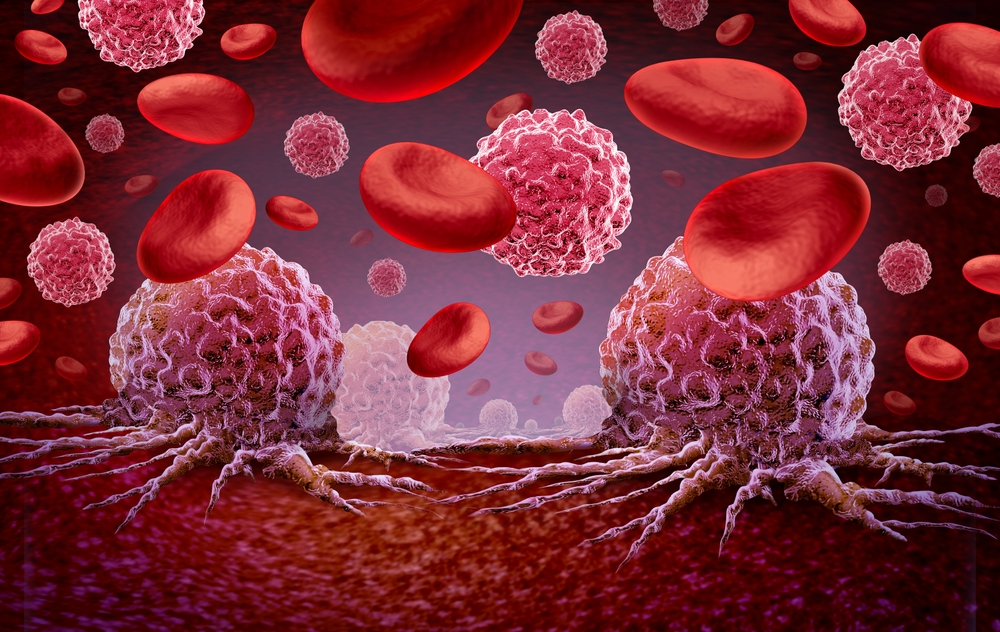A Study Found That Walking More Than 7,000 Steps a Day Can Help Reduce the Risk of Developing These 13 Different Types of Cancer

What if every step you took today could quietly guard you against one of life’s greatest threats? Picture this: as you walk from your car to your home, pace through the aisles at the grocery store, or stroll through your neighborhood park, you’re not just moving through space you’re building invisible armor against cancer.
The numbers are staggering: cancer touches millions of lives each year, with diagnoses and health care costs soaring worldwide. Yet, in a world where we’re glued to seats and screens, a simple, ordinary habit—walking has the power to tip the odds in your favor. Fresh research from some of the brightest minds in science reveals that lacing up your shoes and hitting a modest 7,000 steps a day is more than just good for your heart or waistline; it could help shield you from not one, but thirteen different types of cancer.
Think about that for a moment. Thousands of small, everyday acts steps you can take anywhere, at any pace adding up to a life rewritten: less fear, more freedom, and a future where your daily routine becomes your personal revolution against disease.
How Everyday Steps Defend Against Cancer
When you think of cancer prevention, you might imagine complicated routines or hours in the gym. But science reminds us: even the simplest movements, done consistently, can create powerful defenses within our bodies. Here’s how walking each day acts as a shield against cancer:
1. Regulating Hormones
Physical activity, including walking, helps stabilize certain hormones like estrogen and insulin that, when unchecked, can fuel the development of some cancers such as breast and endometrial. By keeping these hormones in balance, you make your internal environment less inviting for cancer to take hold.
2. Reducing Inflammation
Chronic inflammation is like a slow-burning fire that primes the body for disease including cancer. Regular walking calms this inflammation, lowering the risk of cellular changes that can spark cancer in the first place.
3. Boosting Immune Surveillance
Your immune system patrols your body, looking for abnormal cells. Walking wakes up this internal patrol, improving your body’s ability to recognize and destroy potential cancer threats before they grow.

4. Improving Insulin Sensitivity
Elevated levels of insulin and insulin-like growth factors have been linked to tumor development. Consistent, daily walking improves how your body uses insulin, reducing fuel available for tumor growth.
5. Helping Maintain a Healthy Weight
Excess weight is associated with 14–20% of all cancer deaths in the U.S., and regular activity like walking is one of the most sustainable ways to keep weight in check. By moving more, you take control of one of the most important modifiable cancer risk factors.
6. Replacing Sedentary Time
It’s not just about exercising more sitting less matters. Long periods of sitting, regardless of overall fitness, raise the risk for several types of cancer. Swapping some of that sitting with any light activity like walking pays off in cancer protection.
From hormonal harmony to igniting your immune defenses, every step starts a series of positive changes under your skin. There’s no need for perfection: it’s the daily, intentional movement at any pace that arms your body with resilience against cancer’s threats.
How Many Steps Matter, and Why?

Let’s get specific just how many steps should we take each day to make a real difference in cancer risk? Forget the hype of round numbers and catchy phrases; the science paints a clearer, more empowering picture.
The Thresholds That Matter
Research tracking tens of thousands of people with wearable devices found that the protective power of walking begins around 5,000 steps per day, but the real benefits take shape with a little more effort:
- 7,000 steps per day: At this point, the risk of developing any of the 13 tracked cancers drops by 11% compared to those who take fewer steps.
- 9,000 steps per day: The reduction in cancer risk deepens to 16%.
- Beyond 9,000 steps: Additional steps
The Truth About Pace and Intensity
You may wonder: “Does speed matter? Should I be power-walking?” The answer is freeing. Studies show that the total number of steps matters much more than the pace. Walking briskly, leisurely, or anywhere in between all count toward lowering risk, as long as you’re moving regularly.
Debunking Step Myths
The well-known 10,000-step target was never grounded in medical science. In fact, its origins trace back to a Japanese pedometer marketing campaign in the 1960s not any biological threshold. The real-world evidence suggests that 7,000–9,000 steps a day is a more achievable and effective range for most people.
Making It Achievable
This range roughly 3 to 4 miles, or about an hour of walking spread throughout your day means you don’t have to chase perfection. You just need steady, daily movement. Even if you fall short of 10,000, you’re still unlocking significant protection for your health.
This is not about chasing numbers. It’s about making each step count on the journey toward a stronger, healthier you.
The 13 Cancers Impacted Most by Walking

When you add more steps to your day, you’re not just moving for the sake of movement you’re influencing your odds against some of the most threatening cancers we face. Let’s look at the specifics. Researchers found that increasing your daily step count lowers the risk of developing 13 different types of cancer:
- Esophageal
- Liver
- Lung
- Kidney
- Gastric (Stomach)
- Endometrial (Lining of the uterus)
- Myeloid leukemia
- Myeloma
- Colon
- Head and neck
- Rectal
- Bladder
- Breast
While all 13 types saw some benefit, the reduction in risk was most pronounced for these six:
- Gastric
- Bladder
- Liver
- Endometrial
- Lung
- Head and neck cancers
Over a six-year period, about 3% of people in the study developed one of these cancers. For men, colon, rectal, and lung cancers appeared most frequently, while women more commonly developed breast, colon, endometrial, and lung cancers.
The Science Behind Movement and Cancer Prevention

Why does walking one of life’s simplest actions have such a profound protective effect against cancer? The answer is rooted deep within your biology, where movement sets off a chain reaction of healthy changes from your immune system to your smallest cells.
Hormonal Regulation
Physical activity influences the levels of several hormones tied to cancer development. Regular walking helps keep estrogen and insulin in check two hormones that, in high amounts, are linked to a greater risk of cancers like breast and endometrial. By balancing these chemical messengers, walking makes your body a less fertile ground for cancer to take hold.
Lowering Chronic Inflammation
Inflammation is the body’s response to injury, but when it lingers, it can fuel the growth of cancerous cells. Daily movement quiets this ongoing inflammation. Walking reduces the chemicals in your body that promote chronic inflammation, making it tougher for cancer to thrive.
Strengthening Immune Defense
Your immune system serves as a vigilant protector, constantly seeking out and disposing of abnormal or unhealthy cells. Exercise, even at moderate levels, “wakes up” these immune patrols, sharpening their ability to destroy potential threats before they become dangerous literally stopping cancer before it can start.
Improving Insulin Sensitivity
High levels of insulin and insulin-like growth factors can act as food for tumors, encouraging their development. Walking helps your body use insulin more efficiently and lowers these growth factors, slamming the door on one pathway cancer uses to spread.
Maintaining Healthy Weight
Body fat is not passive; it produces hormones and inflammatory signals that can stimulate cancer growth. Staying active is one of the most effective and sustainable ways to maintain a healthy body weight—lowering the risk for at least 13 types of cancer in the process.
Sitting Less Matters
It’s not just structured exercise that counts. Swapping longer periods of sitting with bursts of movement—even light activity makes a true difference. Prolonged sitting has been independently tied to a higher chance of several cancers, alongside diseases like diabetes and heart disease. Every moment you choose to move rather than sit is a biological vote for health.
Action Steps: Integrating Movement Into Your Busy Life

You don’t need hours of free time or a drastic life overhaul to put the research into action just a shift in perspective and a few practical changes. Here’s how to gently, but effectively, fit more steps into your everyday routine and walk your way toward better health.
Break Up Sitting Time
- Walk-and-Talk: Step away from your desk or couch during phone calls.
- Lunch Break Loops: Use part of your lunch break for a short walk, even if it’s just around your building or block.
- Stair Switch: Opt for stairs over elevators or escalators when possible each flight counts.
Build Movement Into Your Routine
- Errand Steps: Park further from your destination or get off public transport one stop early.
- Chores That Count: View chores like vacuuming, gardening, or tidying as opportunities to add steps.
- Micro-breaks: Set a reminder to get up and move every hour; even a quick stroll around the office or home helps.
Make It Social
- Buddy Strolls: Invite friends or family to walk with you after dinner or on weekends.
- Walking Meetings: Suggest meetings or catch-ups on foot instead of seated around a table.
Use Technology Wisely
- Track Progress: Use a pedometer or smartphone app to count your steps and gently challenge yourself to add a few more each week.
- Set Achievable Goals: Remember, research shows real benefits begin at 7,000 steps. Celebrate each milestone you hit on your way up.
Embrace Flexibility
- Break It Up: You don’t have to do all your walking at once short bouts throughout the day add up just as well as a long, dedicated walk.
- Start Where You Are: There’s no need to stress if you can’t hit 10,000 steps right away. Any increase from your usual activity level is progress.
Walking is a form of movement that belongs to everyone it adapts to your life, resources, and energy. The more you notice small opportunities for steps, the more those moments add up, turning ordinary days into extraordinary acts of self-care.
Every Step Is a Statement: Walk Into Your Future
Sometimes, the solutions that hold the greatest power are the simplest ones at our feet—quite literally. Each step you take is more than a small act of willpower or routine; it’s a statement that your life and well-being matter. The science is clear: walking just a bit more each day isn’t about chasing numbers or perfection—it’s about building a resilient body, pushing back against some of life’s gravest threats, and reclaiming your day from endless sitting.
Picture your daily steps as quiet votes for a healthier, longer, more empowered life. They add up, day by day—a gentle, persistent force working in your favor, defending you against 13 different cancers, and transforming ordinary routines into meaningful acts of self-care and courage.
You don’t need to wait for the perfect moment, a new pair of shoes, or a dramatic lifestyle overhaul. You just need to start where you are, with what you have. As you step forward, remember: every stride is a small rebellion against disease and a big move toward the life you deserve.
Loading...

